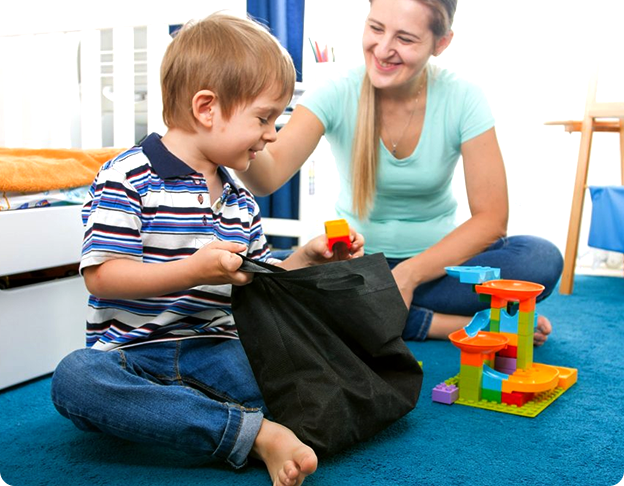Have you ever tried to teach yourself a brand-new skill? In the beginning, it can seem utterly overwhelming. For example, pretend that you have never baked a cake. Figuring out how to get from step one to the final result can be challenging.
The best way to learn a new skill, including baking a cake, is to have someone break down the steps for you. You need to wash your hands, gather your supplies and ingredients, preheat the oven, etc. Then there is the matter of following the recipe, decorating your cake, and cleaning up.
Each of the steps listed above can be thought of as a behavior. Once all of the behaviors are chained together, the end result is what you were hoping for. In the beginning, someone may have to tell you every step or behavior. Over time, you can remember at least some on your own. Eventually, you may be able to do the entire task without prompting at all. That same concept, known as chaining, can make a significant difference when trying to teach a child with autism spectrum disorder a new skill.
Understanding Chaining and How it Can Help
Chaining is a process that nearly every parent will do at some point, whether they are trying out applied behavior analysis or not. Potty training is an excellent example. No parent has ever gotten away with simply telling their child, “Go to the bathroom” and having them instantly understand and do so with success.
Instead, potty training is broken down into small behaviors. First, you must walk to the bathroom. Then, we pull down our pants. Next, we sit on the toilet, etc. By breaking down a seemingly large task into small, manageable goals, we are setting our children up for success and taking steps to prevent them from getting overwhelmed.
Different Methods of Chaining
In the beginning, you will need to prompt your child along every step of the way. Ultimately, you will want to be able to be less involved as your child learns the new behavior on their own. That is when you will start fading your prompts.
Fading means reducing the amount of help you are giving. Since the goal of these strategies is to help your child be more independent, it is natural that you will want to provide less and less instruction as time goes on. Prompts can change from physical to verbal or can be eliminated altogether when the time comes.
Forwards chaining is a strategy where you start to fade the beginning prompts first from the behavior. In the potty-training example, this would mean that your child is expected to know that they need to walk to the bathroom and pull down their pants on their own.
Backwards chaining is essentially the opposite. You would still prompt your child the way you always have in the beginning, but you would leave out the last couple of steps. This may mean they are expected to pull up their pants without prompting, or perhaps turn off the light.
Total task chaining is the third option. This means you prompt when it is necessary, but otherwise, simply observe. Often, children struggle with steps in the middle of the behavior. This is where you step in with a well-timed prompt to keep them moving forward.
What is Shaping? Why Does it Help?
Shaping is a strategy to help you and your child get systematically closer to a terminal goal. This means, naturally, that you have to have a target goal in mind. Shaping comes in particularly handy with language development. If your child consistently says the same thing for being thirsty, for example, you can start to shape their behavior until they are communicating their need clearly.
Let’s say that your child says “boos” when they are thirsty and that you would eventually like them to say “drink.” You would positively reinforce your child for communicating their needs. Then, you would watch for any behavior that was closer to the goal. For example, if your child starts saying “bink”, that is amazing progress and should be celebrated! Eventually, this can turn into “brink” and then “drink”. Shaping and watching for even the smallest improvement helps to achieve specific goals.
Why Use Shaping & Chaining?
Shaping and chaining are both techniques that make it easier for children to learn new skills. Without these methods, it is easy to get overwhelmed with teaching larger skills with several steps, which can lead to challenging behaviors. Shaping, in particular, can help children learn new skills. Over time, these tools will help reduce the amount of parent intervention required and increase the amount of independence for your child.




